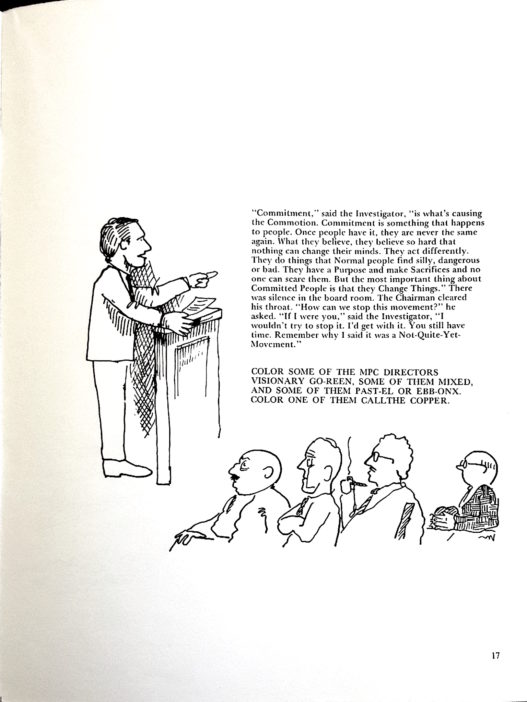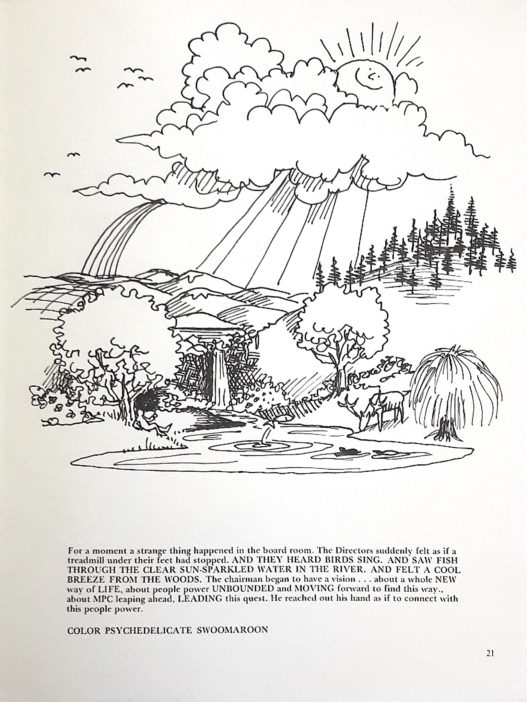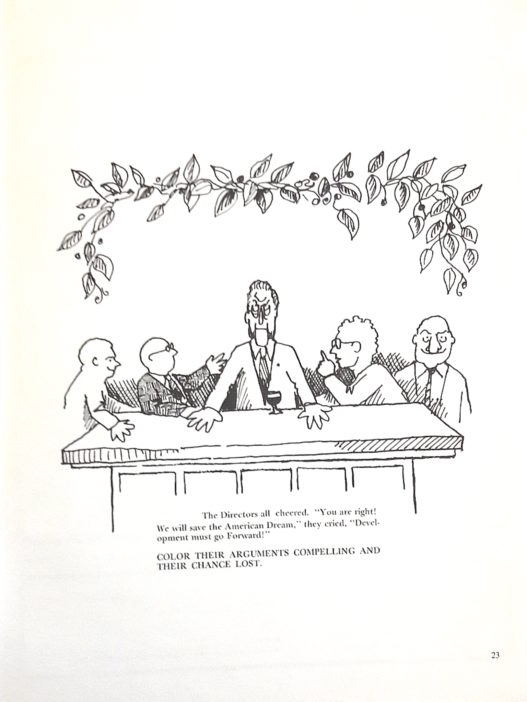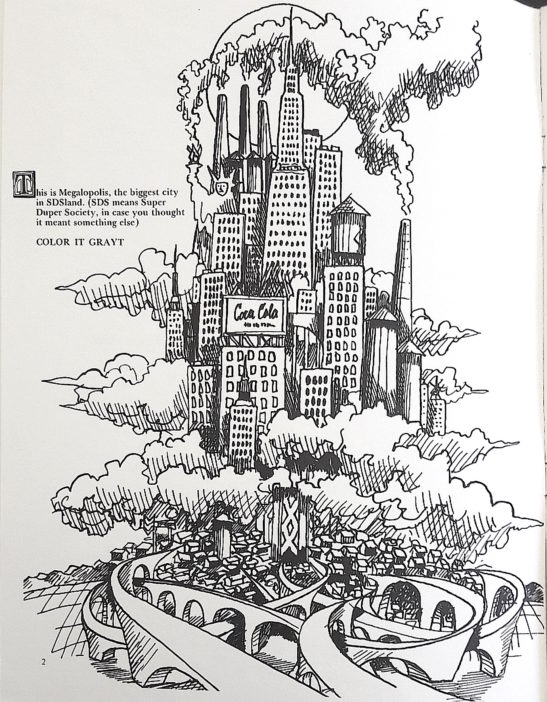“An Eco-activist Fable: The Color-in Book” is an example of Ecology Action’s innovative educational methods: the organization lent a full issue of its in-house journal to a “color-in book” that told a story about a clique of businesspeople looking to despoil the environment and a group of activists trying to stop them.
This “eco-activist fable” might be appreciated in the context of two other books published in 1971: Dr. Seuss’s The Lorax and Saul Alinsky’s Rules for Radicals. Like The Lorax, Ecology Action’s parable dramatized the costs of corporate greed. Like Alinsky’s guidebook for community organizers, it was aware of the usefulness, within a coalition of activists, of having a common enemy (even if the consensus around the common enemy is belied by the diversity of viewpoints within its ranks).
Although coloring books are conventionally written for children, this one is arguably written more for “heads” who might appreciate the critique of profiteering that an attitude of guilelessness exposes. The instructions within the coloring book sometimes had a knowing aspect to them (scientists asked inside the story to be “colored neutral”) and sometimes called out for colors never to be found in a Crayola box (a utopian vision of nature was to be colored “psychedelicate swoomaroon”).
In the story, a group of corporate directors is frustrated by the gathering protests of eco-activists. They try to co-opt the movement by recruiting one of its leaders, but that effort fails to defuse the protests. So they bring in an investigator who warns them that, unless they’re more mindful of the environment, they will only fuel the commitment of the protesters.

The corporate directors soften for a moment—they feel “as if a treadmill under their feet had stopped”—and their minds fill with a vision of a utopian world.

But the story doesn’t end there. The directors double down on their plans for development, thinking that the “American dream” depends on it.
